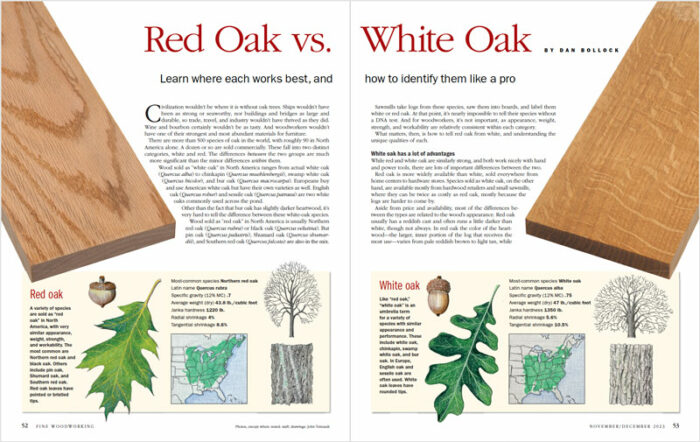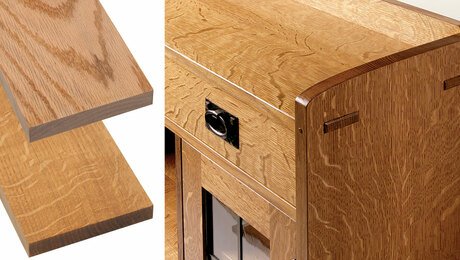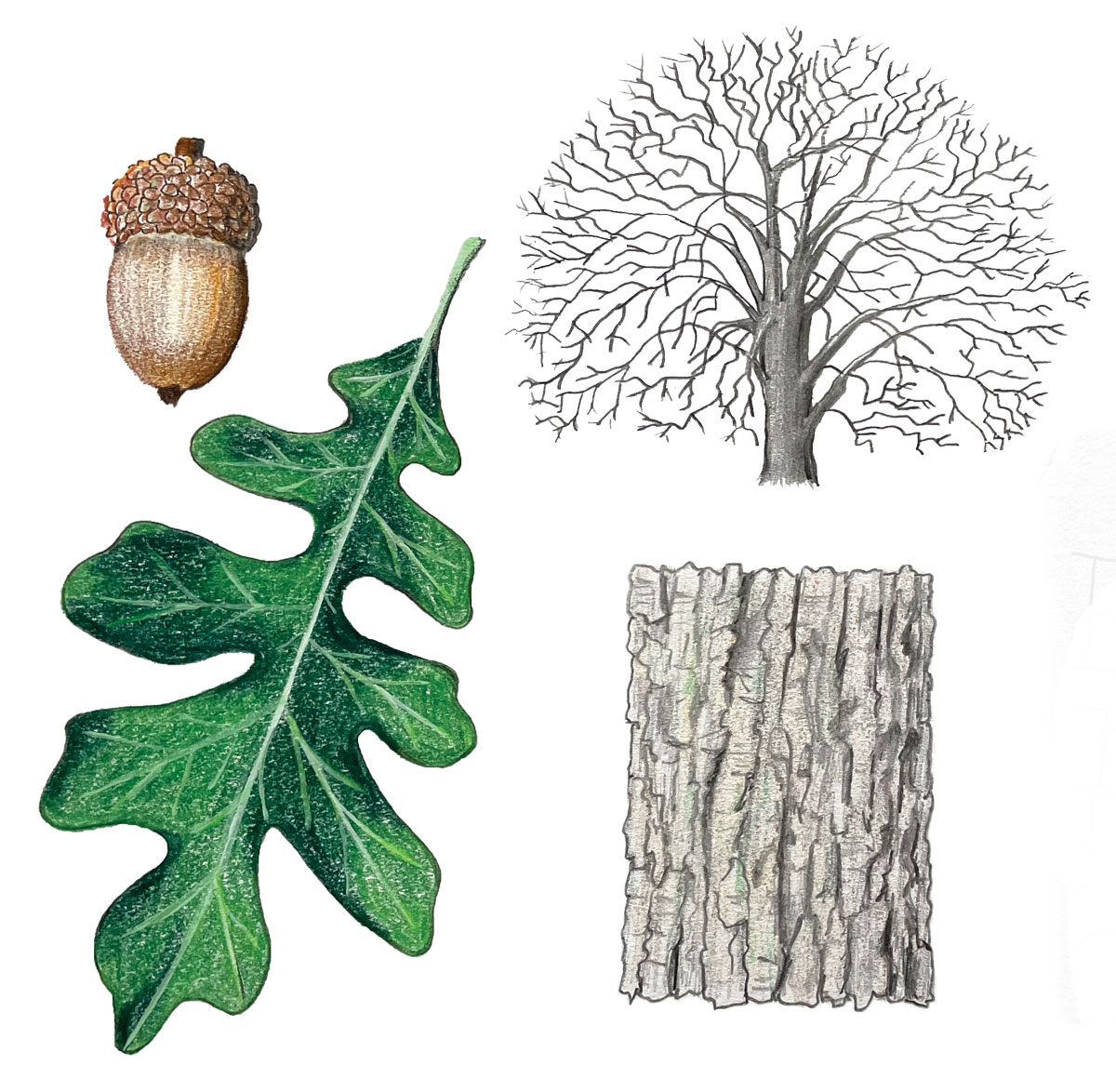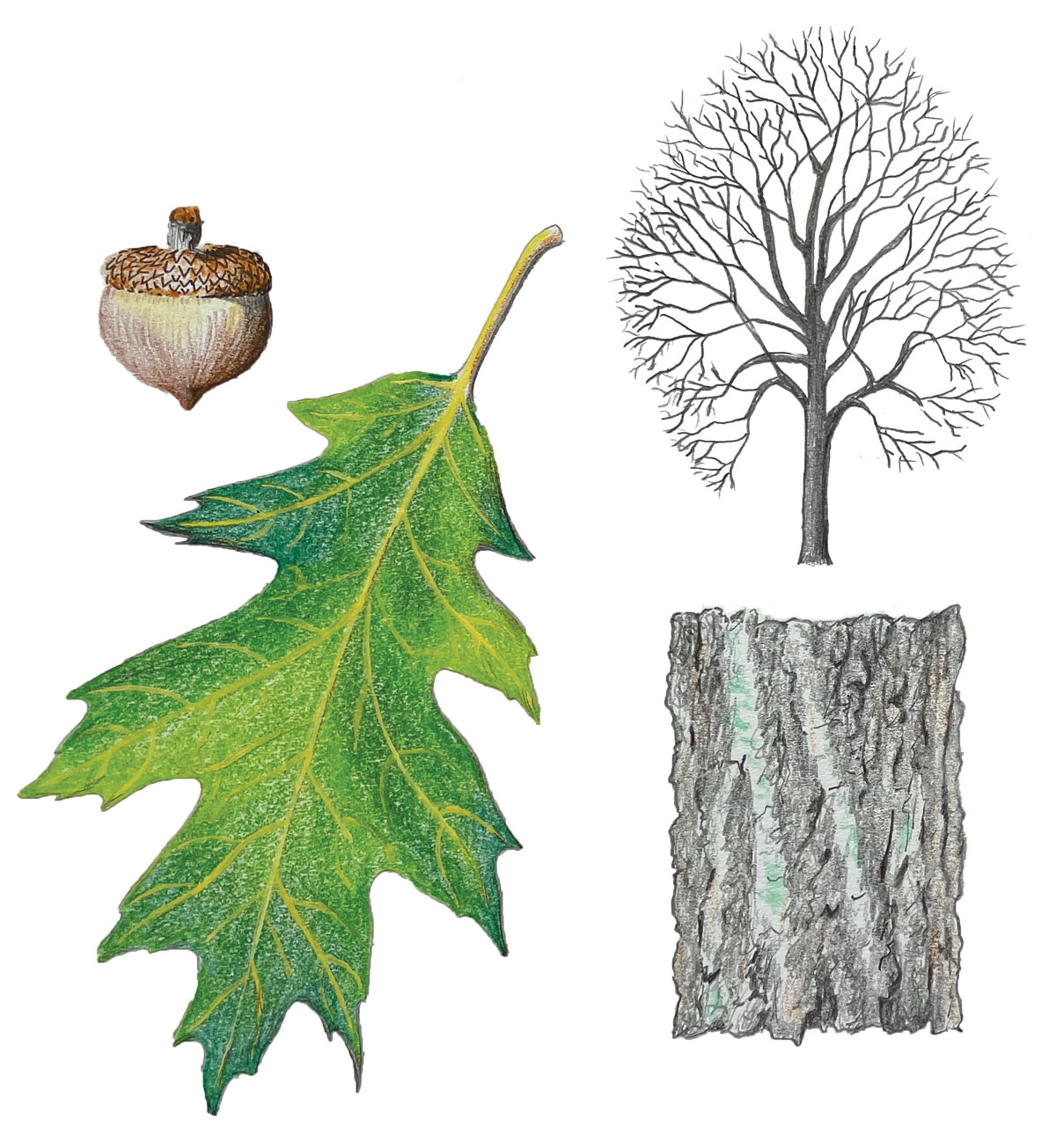Red Oak vs. White Oak

Synopsis: Delve into the details of oak wood, which boasts more than 500 different species across the world. For woodworking purposes, red oak and white oak are the main categories, and there are significant differences between them.
Red oak is less expensive, has a warmer tone and coarser grain, and is often used for flooring and cabinetry. White oak is pricier, has prominent ray fleck, darkens well with fuming, and is often used for fine furniture, particularly Arts and Crafts. There are more subtle differences, too, explored in the article.
Civilization wouldn’t be where it is without oak trees. Ships wouldn’t have been as strong or seaworthy, nor buildings and bridges as large and durable, so trade, travel, and industry wouldn’t have thrived as they did. Wine and bourbon certainly wouldn’t be as tasty. And woodworkers wouldn’t have one of their strongest and most abundant materials for furniture.
There are more than 500 species of oak in the world, with roughly 90 in North America alone. A dozen or so are sold commercially. These fall into two distinct categories, white and red. The differences between the two groups are much more significant than the minor differences between them.
Wood sold as “white oak” in North America ranges from actual white oak (Quercus alba) to chinkapin (Quercus muehlenbergii), swamp white oak (Quercus bicolor), and bur oak (Quercus macrocarpa). Europeans buy and use American white oak but have their varieties as well. English oak (Quercus robur) and sessile oak (Quercus patraea) are two white oaks commonly used across the pond.
Other than the fact that bur oak has slightly darker heartwood, it’s very hard to tell the difference between these white-oak species.
White oakLike “red oak,” “white oak” is an umbrella term for a variety of species with similar appearance and performance. These include white oak, chinkapin, swamp white oak, and bur oak. In Europe, English oak and sessile oak are often used. White oak leaves have rounded tips. The most common species is white oak Latin name: Quercus alba Specific gravity (12% MC): .75 Average weight (dry): 47 lb./cubic foot Janka hardness: 1350 lb. Radial shrinkage: 5.6% Tangential shrinkage: 10.5% |
Wood sold as “red oak” in North America is usually Northern red oak (Quercus rubra) or black oak (Quercus velutina). But pin oak (Quercus palustris), Shumard oak (Quercus shumardii), and Southern red oak (Quercus falcata) are also in the mix.
Red oakA variety of species are sold as “red oak” in North America, with very similar appearance, weight, strength, and workability. The most common are Northern red oak and black oak. Others include pin oak, Shumard oak, and Southern red oak. Red oak leaves have pointed or bristled tips. Most common species: Northern red oak Latin name: Quercus rubra Specific gravity (12% MC): .7 Average weight (dry): 43.8 lb./cubic foot Janka hardness: 1220 lb. Radial shrinkage: 4% Tangential shrinkage: 8.6% |
Sawmills take logs from these species, saw them into boards, and label them white or red oak. At that point, it’s nearly impossible to tell their species without a DNA test. And for woodworkers, it’s not important, as appearance, weight, strength, and workability are relatively consistent within each category.
What matters, then, is how to tell red oak from white, and understanding the unique qualities of each.
White oak has a lot of advantages
While red and white oak are similarly strong, and both work nicely with hand and power tools, there are lots of important differences between the two.
Red oak is more widely available than white, sold everywhere from home centers to hardware stores. Species sold as white oak, on the other hand, are available mostly from hardwood retailers and small sawmills, where they can be twice as costly as red oak, mostly because the logs are harder to come by.
Aside from price and availability, most of the differences between the types are related to the wood’s appearance. Red oak usually has a reddish cast and often runs a little darker than white, though not always. In red oak, the color of the heartwood—the larger, inner portion of the log that receives the most use—varies from pale reddish brown to light tan, while white oak’s heartwood runs from pale or greenish tan to grayish brown.
The grain of the two woods is also very different. Red oak has a higher number of large pores, making its grain look coarser and its grain lines more prominent.

Drawings: John Tetreault
Sign up for eletters today and get the latest techniques and how-to from Fine Woodworking, plus special offers.
Download FREE PDF
when you enter your email address below.








